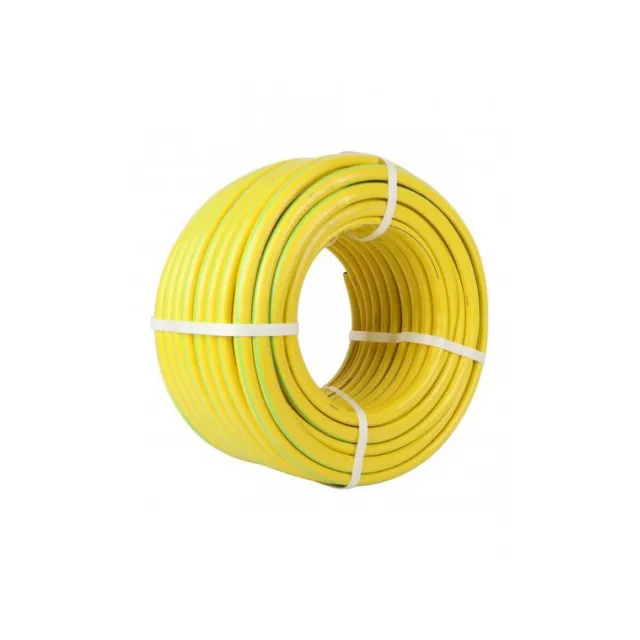How to Connect PVC Pipe to Your Garden Hose Efficiently and Effectively
Connecting PVC Pipe to a Garden Hose A Comprehensive Guide
In gardening and landscaping, efficient water management is key to thriving plants and happy gardeners. One common challenge is connecting a PVC pipe to a garden hose, creating a durable and effective watering solution. This guide will walk you through the steps necessary to make this connection seamlessly, ensuring your watering system is both functional and reliable.
Understanding the Components
Before starting, it’s essential to understand the components involved in your system. PVC pipes are durable plastic tubes commonly used for plumbing and irrigation systems, while garden hoses are flexible tubes that transport water to various parts of your garden. Connecting these two types of materials requires some specific fittings and adapters to ensure a secure and leak-free fixture.
Materials Needed
To connect a PVC pipe to a garden hose, gather the following materials
1. PVC Pipe Select the appropriate diameter based on your existing irrigation needs. 2. Garden Hose Ensure it fits standard fittings (usually 3/4 inch). 3. PVC Hose Adapter This fitting allows for a secure connection between the PVC pipe and the garden hose. 4. PVC Cement This solvent is necessary for securing PVC connections. 5. Teflon Tape This tape becomes important when dealing with threaded connections to ensure an airtight seal. 6. Pipe Cutter For cutting the PVC pipe to the correct length. 7. Wrench Useful for tightening connections without damaging threads.
The Connection Process
Follow these steps to successfully connect your PVC pipe to the garden hose
1. Cut the PVC Pipe Using the pipe cutter, cut your PVC pipe to the necessary length. Ensure the cut is clean to provide the best surface for gluing and sealing.
connecting pvc pipe to garden hose

2. Prepare the Adapter Take your PVC hose adapter and check its compatibility with both the PVC pipe and garden hose. Most adapters have one end that fits snugly into the PVC and a threaded end for attaching to the garden hose.
3. Apply PVC Cement Before attaching the adapter, apply PVC primer to the end of the pipe and the inner side of the adapter. This step prepares the surfaces for a strong bond. After priming, apply a generous amount of PVC cement to both the pipe and adapter.
4. Connect the Adapter Push the adapter onto the end of the PVC pipe firmly, ensuring no gaps are present. Hold it in place for about 30 seconds to ensure a good bond forms. Be sure to follow the manufacturer's instructions regarding drying time.
5. Attach the Garden Hose If your adapter has threads on one end, wrap Teflon tape around the threads to provide an airtight seal. Then, screw the garden hose onto the threaded end of the adapter. Use a wrench to tighten it, but be careful not to overtighten, which could damage the fittings.
6. Test the Connection Once everything is secured, turn on the water to test for leaks. Check all connections for any signs of water escaping. If you notice any leaks, tighten the fittings as necessary or reapply Teflon tape where needed.
Tips and Maintenance
- Use Quality Materials Investing in quality PVC pipes and adapters can prevent future problems and ensure longevity in your watering system. - Regular Inspection Periodically check the entire system for leaks or wear. Replace any damaged components promptly to maintain efficiency. - Seasonal Considerations In colder climates, consider disconnecting your garden hose from the PVC system in winter to avoid freeze damage.
Conclusion
Connecting a PVC pipe to a garden hose is a straightforward task that can significantly enhance your gardening experience. By following these steps, you can create a reliable watering system that helps your plants flourish. With proper materials and techniques, this connection will stand the test of time, allowing you to focus on what you love most—your garden.
-
Unrivaled Performance and Applications of PU Pneumatic Hoses and TubesNewsJun.11,2025
-
The Transparent World of Industrial Tubing and Hosing SolutionsNewsJun.11,2025
-
The Intricate World of Pneumatic Conduits: Tubes and HosesNewsJun.11,2025
-
The Dynamic Landscape of Pneumatic Conduits: Unraveling Key ComponentsNewsJun.11,2025
-
The Diverse Applications and Significance of Transparent PVC TubingNewsJun.11,2025
-
High - Pressure Pneumatic Tubing and Systems: An In - Depth LookNewsJun.11,2025














